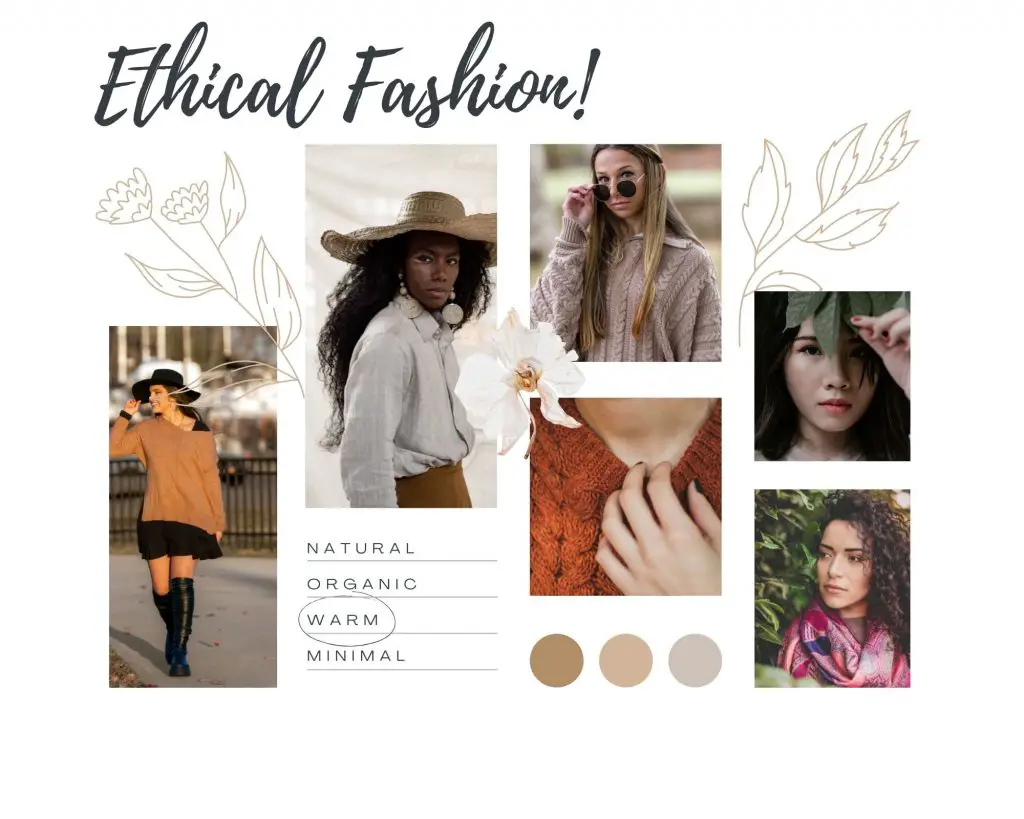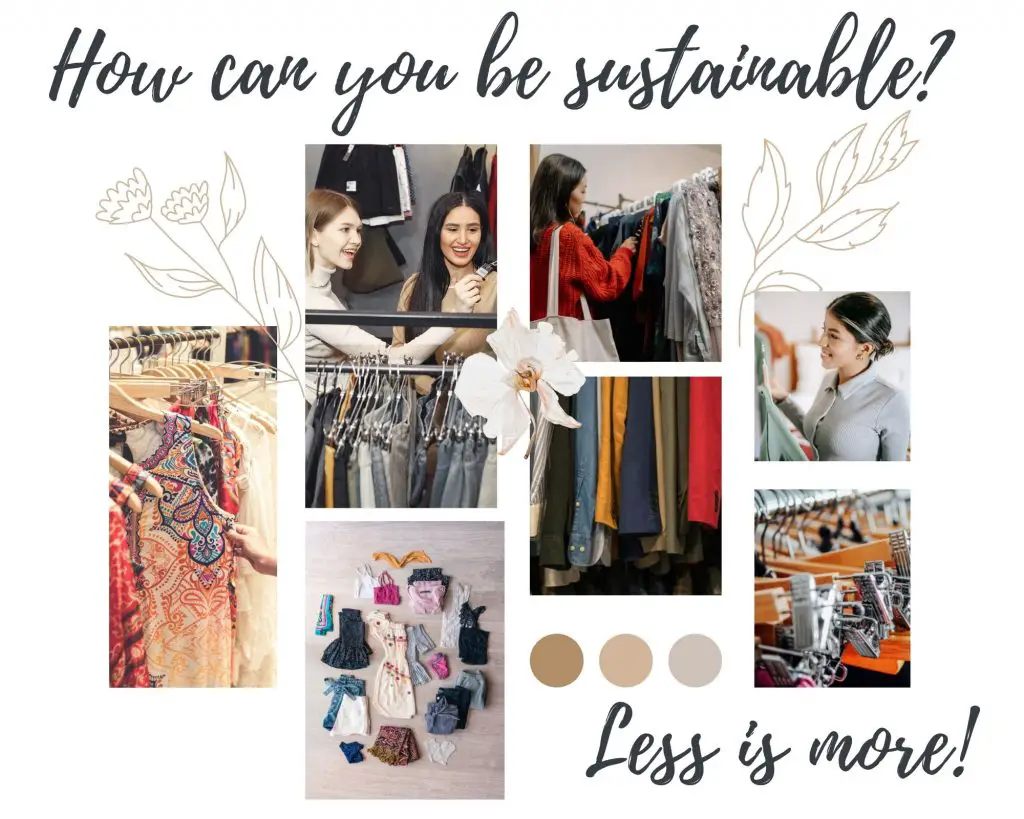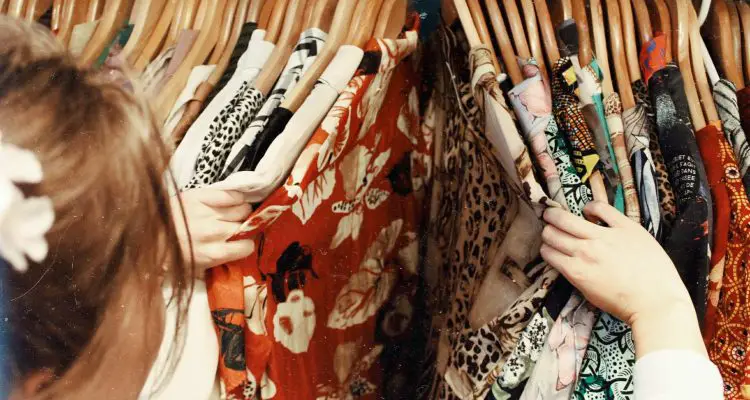Suppose you’re someone who’s just getting started in becoming more eco-friendly.
You try to look up articles on how to go zero-waste or upcycle the old clothes tucked away in your bottom drawer. Then, suddenly, while searching for more tips on going green, you come across a familiar yet so foreign term: “sustainable fashion”.
At this point, you probably have used, or at least heard, the phrase “sustainable fashion” a couple of times. But what does it truly mean, and why does it matter?
Is it about wearing clothes made from cruelty-free and organic textiles? How about wearing clothing items that are made from discarded fabric? Or can it be both?
It’s no secret that sustainable wear is currently going mainstream. It’s rising popularity is accompanied by a lot of questions on what it truly means to dress with the environment in mind.
So if you’re still starting on your journey on becoming more environmentally-friendly or an experienced eco-fashionista that wants to know more, read on because this article is for you. Here’s a simple yet thorough explainer on what sustainable fashion is and why its important in today’s world:
Contents
So, what is sustainable fashion?

Before we get to the nitty-gritty of sustainable fashion, let’s first define basic terms by starting with the word “sustainability”.
In 1987, the Brundtland Commission of the United Nations (UN) defined sustainability as being able to “meet the needs of the present without risking the future generations’ ability to meet their own needs”.
In light of such meaning given by the UN, sustainable fashion refers to the long-standing movement of wearing clothes designed, produced, distributed, and used in an eco-friendly approach.
It is mainly about mindfully consuming clothes to ensure that little to no harm befalls the planet, or at least we don’t use up a lot of its natural resources.
While sustainable fashion emphasises wearing clothes designed to have the least environmental impact, it doesn’t always involve new purchases from eco-friendly clothing brands.
The everyday consumer can also practice sustainable fashion by just extending the life of their clothes, upcycling old clothing, or simply recycling discarded fabrics.
Is it different from ‘ethical fashion’?

The phrase “ethical fashion” is a term that’s confused with sustainable fashion. Although similar, ethical wear is a bit different as it places more emphasis on the clothing industry’s social impacts.
The word “ethical” directly means “morally right and good”. As such, ethical fashion has a lot more coverage as it raises concerns over dressmakers and workers’ living wages, labour conditions, safety, and health. Creating ethical clothing goes beyond upholding workers’ rights as it also includes the fair and just treatment of animals, such as in the case of cruelty-free and vegan fashion.
So, in essence, sustainable fashion is focused on caring for the environment, while ethical fashion is more on the people and animals involved in the process of making clothes. Still, despite being different, they go hand-in-hand in making fashion more eco-friendly with socially equitable means of production.
Why does sustainable fashion matter?
At this point, you already know what sustainable fashion is and how it’s different from ethical fashion. Now, it’s time to understand why it plays an essential role in solving today’s environmental and labour crises.
In case you don’t know it by now, the fashion industry is one of the largest contributors to pollution worldwide:
- The clothing industry generates more than 10% of global carbon emissions, which is
- 85% of textiles produced each year are discarded and dumped as waste in landfills.
- Over 20 per cent of environmentally-damaging wastewater produced on a global scale is accounted for by the clothing industry.
Apart from it’s established harmful effects on the planet, the fashion industry has also come under fire for its inferior treatment of workers based in developing nations:
- In 2013, the Rana Plaza garment factory in Bangladesh, which had poor labour conditions, collapsed and took thousands of its ready-made garment workers’ lives.
- Two of the United Kingdom’s biggest clothing retailers, Primark, and Topshop were found guilty of child labour in 2018 as they allowed people as young as 14 to work for their supply chains.
- Despite being caught in labour scandals many times over, Swedish fashion retail company H&M still uses sweatshop-like factories that force their Bangladeshi workers to make their clothes in unsafe working conditions.
As much as we want to have a planet-friendly and equitable fashion industry, these problematic events continue to happen. Unfortunately, this is due to the decades’ long dominance of ‘fast fashion’ in the market.
“Fast fashion” is a term that is used to describe clothing that is produced quickly and cheaply to fit the latest runway and high-street trends to the extent that it’s almost disposable. Popular fast fashion brands include Zara, Boohoo, and Forever21. Because they’re unbelievably inexpensive, fast fashion clothes are often linked to overproduction, poorly compensated workers, terrible labour conditions, and awful environmental impacts.
In short, “fast fashion” is everything that sustainable and ethical fashion isn’t.
But, is sustainable fashion really sustainable?
It’s crystal clear that sustainable fashion is the opposite of fast fashion.
With this, it’s not surprising to see many fashion retail companies coming out with clothing collections presented to consumers as “eco-friendly” and “sustainable”.
For example, in 2012, fast-fashion giant H&M launched its “Conscious Collection”, a fashion line that is intended to be eco-friendly. However, Norway’s Consumer Authority questioned the brand’s claims to sustainable practices, saying that H&M is making its consumers think that their products are “more sustainable than they actually are”.
Apart from H&M, fashion retail brand Zara was also previously criticised for it’s vague and ambiguous claims on being sustainable.
With this, we can’t help but ask this pressing question: are these clothing brands truly invested in becoming more ecologically responsible, or are they just riding on the sustainable fashion movement to earn more profits?
What Zara and H&M did with their supposed sustainable collections is what is called “greenwashing”. Coined by environmental activist Jay Westervald, greenwashing refers to the way brands and labels mislead their customers into believing that they care for the planet. Examples of blatant greenwashing include creating “eco-friendly” products and services to make money off eco-conscious consumers or, worse, claiming to be environmentally responsible while continuing unsustainable practices.
It can be challenging to spot greenwashing in mainstream brands. However, there are ways that can help you tell the difference between genuine eco-friendly brands from those that are not.
After all, it’s up to us consumers to be mindful of the brands we buy our clothes from if we want t to become eco-conscious.
Read: The Environmental Sins Brands Hide behind the Green Screen: Greenwashing and How to Spot It
How can you be sustainable?
Now that you’ve realised the importance of sustainable clothing production, you’re probably thinking of becoming more sustainable – not just for the planet but also for the people who make the clothes that we wear.
You can simply start by being mindful of the household waste you generate and make an effort to lessen them. You can also proceed to your living room and repurpose whatever old item that you can find. Or, you could take a look into your cluttered wardrobe and think of ways on how you can dress sustainably for a change.
Read:
12 Best Fashion Apps to Know About for a Sustainable Closet and Lifestyle
How do you practice sustainable fashion?

As mentioned previously, sustainable fashion is mainly about wearing clothes that are created and distributed with the environment in mind. To help you gradually make your closet greener, we’d like to share with you three practical tips you can take to get started with eco-fashion without spending too much money:
1. Take care of your clothes well.
The main reason why many clothes end up in landfills is that they’re no longer useful, like when they’re missing some buttons or ripped at certain areas. In order to avoid the scenario of your clothes going to waste in the first place, take good care of them.
Prolong the life of your clothes by adequately handling and caring for them. Doing repairs, tailoring, and necessary fixes will prevent your clothing from being discarded to landfills.
Read: Capsule Wardrobe: A Sustainable Closet That Never Goes Out of Style
2. Thrift-flip or upcycle your old clothes.
If your clothes seem too old, worn out, or out of fashion, you can try doing a “thrift-flip”. Thrift-flipping or upcycling is a creative way of turning old shirts and dresses into something new. By making custom alterations for the clothes that you own, you’re giving them fresh new looks that will surely match your modern, if not, current tastes.
Read: Sustainably Dress for Less: 5 Online Thrift Stores Worth Checking Out
3. Go for secondhand items.
Pre-loved, vintage, or secondhand clothing items from friends and family are of higher quality and durability. Apart from being budget-friendly, you can wear secondhand clothes again and again as they last in our closets longer. Plus, vintage items are timeless, so you’ll indeed have absolute staples to your wardrobes that will fit every occasion.
Read: 8 Best Dress Rental Sites for the Eco-friendly and Frugal Fashionista
How do you buy sustainable fashion?
If the need arises for getting new clothes, make it a point to turn to sustainable options such as purchasing eco-friendly and ethically-sourced clothing. Choose clothing brands that use natural and organic materials such as linen, hemp, cotton, and cellulose fibres.
Buy from fashion labels that use recycled or deadstock fabric. Make sure to look for OEKO-TEX 100 or Bluesign certifications. Finally, remember to purchase locally-made clothes or are produced in facilities that operate on renewable energy and prioritise low-waste design.
Read: The Slow Fashion Movement: What It Is, and Why We Should All Get Behind It
Where can I buy sustainable clothes?
Now that you know what to look for in eco-friendly clothing, and all that’s left is to see where you can buy them. You can search for stores that sell sustainable clothes by checking out thrift stores within your vicinity and local brick-and-mortar fashion stores that create homegrown clothing. You may also lookup websites and online pages of shops that sell sustainable wear online.
What brands are sustainable?
There are unique brands that sell affordable and sustainable clothing online. These clothing labels include Boden, an established London-based brand that uses organic cotton and has a transparent supply chain, and Pact, an American eco-label whose products are made with GOTS certified fabric. Other notable brands include Patagonia, Able, and Reformation.
These affordable and accessible clothing labels prove that sustainable and fashionable wear doesn’t have to be pricey nor exclusive.
Read: 10 Sustainable Clothing Brands Worth Checking Out (and Why)
Are luxury brands sustainable?
Designer labels and luxury brands often have a reputation for being lavish and being extravagant. Chanel, a French fashion house, is a good example of this as it is a couture brand whose name is synonymous with women’s high fashion.
But, is Chanel a sustainable brand?
Chanel might be a prominent couture brand, but it reportedly does not use eco-friendly materials. Moreover, it has not taken steps to minimise waste in its supply chain.
Chanel might be unsustainable right now, but other luxury brands currently prove that it’s possible to both have sustainability and luxury in the items you wear. One good example of a luxury brand that has a genuine concern for the environment is Stella McCartney.
Read: 11 Sustainable Clothing Brands for Your Minimalist Wardrobe
How is Stella McCartney sustainable?
What sets Stella McCartney apart from other luxury brands is that they are less exploitative of the Earth’s natural resources. The brand only uses organic cotton and exclusively works with suppliers that value sustainability and quality as much as they do.
Now that you’ve acquainted yourself with the basics of sustainable fashion, you are now a step ahead to becoming more sustainable.
From taking good care of your clothes to doing necessary fixes to buying from eco-friendly brands, there are certainly easy ways that you can do to dress sustainably.
Finding eco-friendly clothing can be quite a challenge, but it doesn’t always have to be, as several fashion brands create low-impact clothing. Whether you’re looking for clothes for casual wear or designer pieces for special events, there are always sustainable and ethically-sourced options for you to find.
So, do you have more questions about sustainable fashion?
Or, maybe you would like to recommend other eco-friendly brands?
Feel free to share with us your thoughts in the comment section below!
Other Articles That May Also Interest You:
23 of the Best Sustainable Handbags for All Your Bits and Bobs
The Best 5 Sustainable Materials and the Best 10 Eco-Friendly Sunglasses Brands…



Leave a Reply